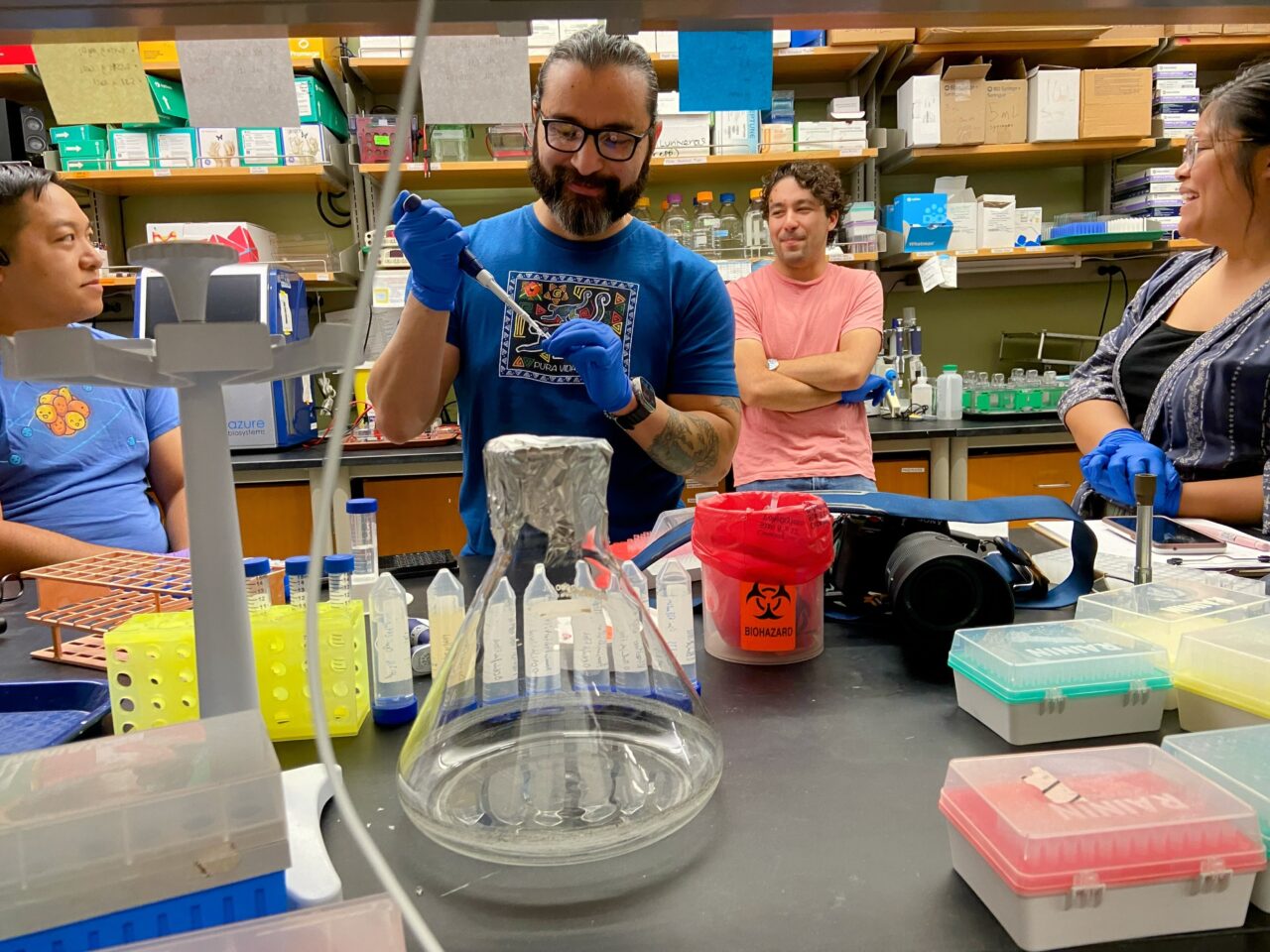When it comes to summer research experiences, most science teachers are torn between wanting to incorporate innovative, new concepts to their classrooms and enjoying a much-deserved break. The choice was made easier this year for ten middle- and high school teachers selected for a Summer Research Experience for Teachers (RET) co-hosted by the Center for Synthetic Biology (CSB) and Northwestern’s Baxter Center for Science Education.
“I’ve done other RET programs and typically they take about eight weeks—— taking up your entire summer. This program was short and sweet. I had time to rest, but also feel productive,” said Valentin Torres, a biology teacher at Walter Payton High School. “Everything about it was great. The Baxter Center team was very accommodating, and the researchers welcomed and encouraged us to get involved in what they were doing.”
For over a decade, CSB has partnered with the Baxter Center to provide outstanding Chicago-area teachers with a brief, but impactful two-week, hands-on opportunity to learn about the many facets of synthetic biology with funding support from the Baxter International Foundation.
Cutting Edge Research
“In the past, we typically had three to four grad students from one lab come up with experiments, but this year we opened it up to several different labs within CSB who worked with the teachers for a day or two to talk about their flavor of synthetic biology and do some hands-on experiments,” said Ashty Karim, Research Assistant Professor, Chemical and Biological Engineering, and CSB Director of Research.
Karim added that CSB was also eager to share current research with teachers, including easy-to-use, handheld water diagnostics that tests for the presence of lead, copper and PFAS and other dangerous toxins. A $3 million National Science Foundation grant awarded to the CSB last year enabled them to grow the RET program.
“We went around the campus and took samples from all over the area and tested the water,” says Torres. “What I’m hoping to do now is bring that to my classroom. One of the lead researchers agreed to provide us with the biosensors. I have 150 students in my biotech class who can now all test out their water and see how well it works. It’s pretty cool.”
Synthetic biology uses tools and concepts from physics, engineering, and computer science to build new biological systems. Monica Gomez, a math and science instructional coach at Schurz High School, a bilingual citywide school that accepts students from across the city of Chicago, was impressed by the program’s interdisciplinary focus.
“For me, it was the idea that all sciences are interrelated. When I was in graduate school, the sciences were always separated even if they were in the same building,” says Gomez. “What made this experience great was the idea that all content labs were together under the same roof. The networking and the interconnectedness are things we can bring back to our students.”
Making Connections
Since its inception, the Baxter Center for Science Education has trained over 3,900 Chicago-area teachers and reached an estimated 260,000 students.
“This program is designed to empower educators by offering a unique opportunity to engage in hands-on research, gain insights into emerging biotechnologies, and bring real-world applications back to the classroom, enriching both teacher and student learning experiences,” says Ashley Walter, a former Program and Partnership Coordinator at the Baxter Center.
According to Jennifer Richards, Research Assistant Professor, School of Education and Social Policy and PI, Baxter Center for Science Education, the program helped to expand the teachers’ understanding of synthetic biology.
“The tasting menu kind of structure allowed teachers’ thinking to evolve about what this field is and what kinds of things it’s seeking to do,” says Richards. “Faculty members and graduate students in the CSB are so skilled at crafting these really rich and meaningful experiences for teachers and excited to share what questions they’re pursuing, how they’re pursuing them and where they’re running into trouble.”
Richards recounts that after a special education teacher visited a lab that utilized HeLa cells, she decided to incorporate the popular book, The Immortal Life of Henrietta Lacks, into her class’s curriculum.
Another teacher was struck by how much failure was involved in the experimentation process and mentioned how kids can find it challenging to identify what is going wrong in a lab.
“After thinking very deeply about how to make a lab protocol for when you get unexpected results, she came up with a way to talk about it,” says Walter. “Ashty liked it so much that he’s adopting it for his lab.”
By investing in the local community, the Baxter Center aims to empower more students in STEM education and career pathways, particularly youth from communities traditionally underrepresented in STEM.
“How do you get teachers excited about modern science so they can get their students excited and give them a better idea of what the real possibilities are,” asks Walter.
The RET program organizers believe that synthetic biology might hold the key.
by Lisa La Vallee
